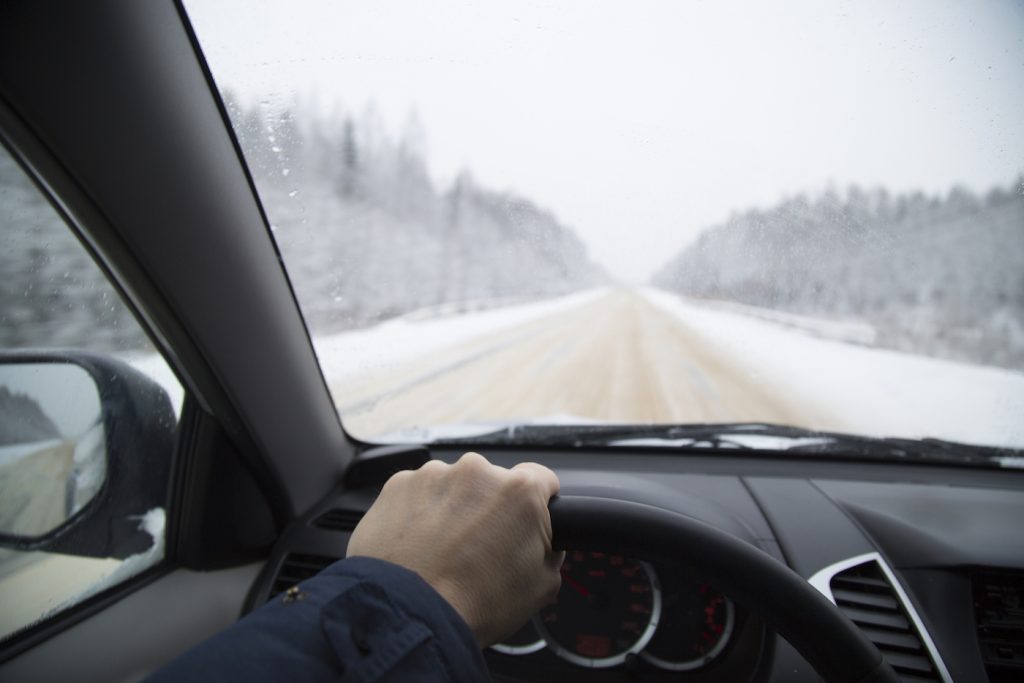
Having lived in Flagstaff, Arizona, for several years (it’s home to a ski resort, so you can imagine what the winters are like), my first piece of advice for driving in the wintertime would be: if there’s snow or ice on the road, stay home. Either that or wait until the deicers and the snow plows have had their way with the road, because it’s much better to be late than, heaven forbid, wrapped around the nearest pine tree.
On that happy note and because you can’t always stay home even if your fuzzy slippers and hot cocoa mug are begging you to, here are a few tips for winter driving that might come in handy when the temperatures drop below zero.
Make sure your car is in tip-top shape.
There’s a reason this tops the list: the last thing you need is a breakdown on a snowy road far from home. Here’s a quick list of “musts” for winter driving:
- Snow tires: adequate traction requires at least 6/32-inch deep tread; don’t rely on all-season tires unless your winters are very mild. Look for the symbol of a “snowflake on a mountain” on the sidewall, which means they meet industry standards. Oh, and make sure to check the pressure.
- Check your lights: Keep them on when driving in less than ideal conditions, and make sure your headlights and taillights are clear of ice and snow. If the lenses on your older car are hazy and oxidized you can use a commercial plastic lens cleaner, but if they’re pitted you might have to replace them.
- Learn to brake: Sounds basic, but antilock brakes need a little finesse, namely “stomp, stay and steer.” Stomp hard on the pedal, stay hard on it and steer around the obstacle. If the roads are actually covered in snow or ice, after you feel the brakes cycling through the ABS ease up a little on it the pedal until it slows down the pulsing to once a second.
- Keep the gas tank at least half full at all times: This will avoid fuel line freeze-ups.
Pack an onboard safety kit.
Winter has its own set of requirements, so you’ll need an ice scraper and snowbrush; kitty littler to help with traction; flashlights (make sure the batteries are fresh and take extras); blankets (or sleeping bag); first aid kit with pocket knife (plus extras of your necessary meds); shovel; jumper cables; battery operated or crank AM/FM radio for emergency messages and traffic reports. Don’t forget your cell phone with the appropriate chargers and take a list of important numbers ON PAPER in case you run out of battery or there is no signal. Throw in a brightly colored bandana in case you need to tie it to your antennae to signal distress.
Don’t over rely on technology.
Electronic stability, anti-lock brakes, all-wheel drive—even owning a powerful SUV can make you feel a little too over-confident. Remember it takes longer to slow down on icy roads and heavy vehicles will just want to keep on going.
Check the weather report.
This is especially important if you’re driving on long stretches of empty road or heading out on a longer trip.
Watch for “black ice.”
This stuff can be tricky. Black ice might look like a puddle or blend in with the tarmac since it’s so thin. This glaze can be dangerous, upping the risk of skidding and accidents due to loss of traction.
Traveling far?
Take plenty of water for you and your pet, along with high protein food: think sandwiches, a thermos filled with hot soup, fruit, power bars, almonds, etc.
If you’re stranded…
Be safe: stay in your car, turn on your flashers, call for help, cover yourself as much as possible and wait until the EMTs arrive. Do not think you can walk out—that’s how people get turned around, lost and are found in snow banks after the thaw. Before you settle into your car, do make sure the exhaust pipe is clear of any debris. If it’s at night, leave the dome light on so the rescuers can find you. It uses very little battery.







